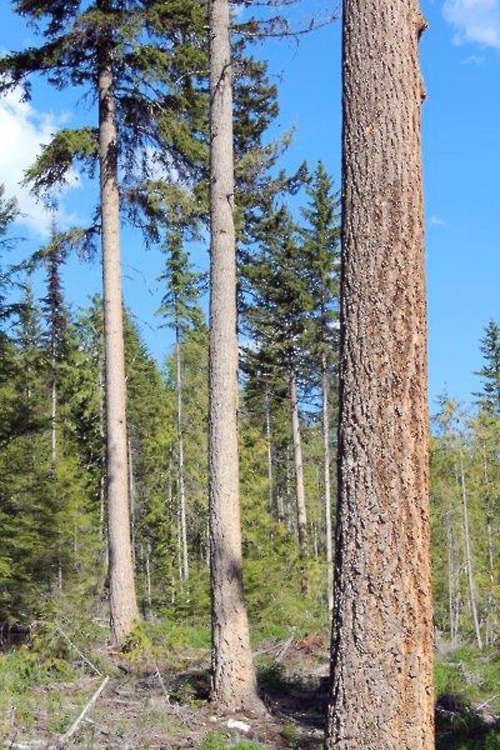The government still hasn’t approved it but people with Wells Gray Community Forest seem hopeful that they will receive an increased annual allowable cut.
The annual cut was set at 20,000 cubic meters per year when the community forest was established in 2006, said WGCF general manager George Brcko. A 13,500 cubic meters per year uplift was added to this as a temporary measure to salvage pine killed by mountain pine beetle.
Brcko was speaking during an open house held July 19 to discuss the community forests’ draft Forest Management Plan and draft Forest Stewardship Plan.
The pine salvage is now nearly all done but community forest has started two projects to help justify keeping the annual harvest at 33,000 cubic meters.
Using a vegetative resource inventory (VRI) and terrestrial ecosystem mapping (TEM) has allowed WGCF to develop a much more detailed picture of what is on the land.
“The government has divided the land into polygons,” Brcko said. “The community forest has divided those polygons into about three, which gives us a far more accurate inventory. Very few other community forests have that level of detail in their data and as recent air photographs.”
The new modeling gives the community forest a better picture of its standing inventory plus the growth capacity of the land.
This in turn shows that the community forest’s landbase could sustain an annual harvest of 33,000 cubic meters. The proposed increase in the AAC is included in the draft Forest Management Plan, said Wes Bieber, the consultant who prepared the plan.
That proposal will go to the province’s chief forester, who will possibly approve the increase or possibly will discuss a different AAC.
The Forest Management Plan basically says what the community forest plans to do, Bieber explained.
The Forest Stewardship Plan, which he also prepared, lays out how the community forest is going to do what is in the Forest Management Plan – while meeting all the government’s objectives.
Once the two plans are approved the community forest will have the flexibility to harvest without government officials needing to look over every cutblock.
WGCF actually works to a higher standard than called for in the plans, Bieber said. For example, they were frustrated with the government’s placement of old growth stands. Instead, they developed what they call “old forest polygons”, which about doubled the area they are managing for ecosystems.
“We decided we don’t need their approval, that we can do this ourselves,” Bieber said.
Brcko, Bieber and Bas Delaney, another local forester who was involved in setting up the community forest, are all enthusiastic about WGCF’s possibilities.
“The most important thing we want local residents to know is this is a place where the forest is managed locally, where decisions are made locally, and where the jobs are kept local,” Delaney said.
The Forest Management Plan and Forest Stewardship Plan are available at the community forest’s website at www.wgcfc.ca.
